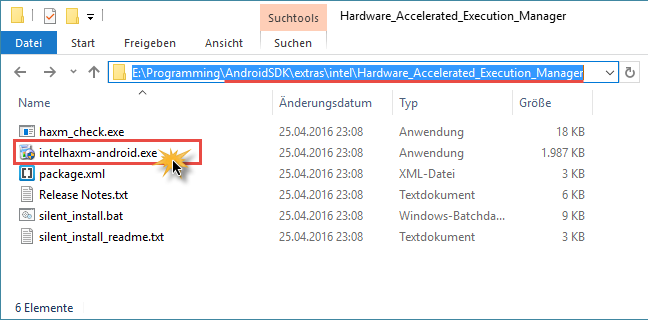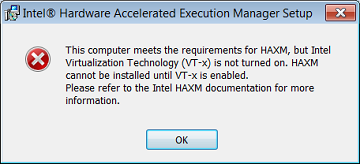
One way to install HAXM is to download the installer with Android SDK Manager: This, of course, will slow down the Windows system, because it runs on the remaining smaller RAM. HAXM is an Intel technology that reserves a portion of RAM to be used exclusively for specific programs What Is HAXM (Hardware Accelerated Execution Manager)? HAXM requires Virtualization Technology (VT) to be enabled in the BIOS setup. This section describes what is HAXM (Hardware Accelerated Execution Manager) and how to install it.

∟HAXM - Hardware Accelerated Execution Manager ∟ Installation of Android SDK R24 and Emulator I personally didn't need to disable it though.Android Tutorials - Herong's Tutorial Examples There is also talk about WSL2 being involved with Hyper-V, hence HAXM not installing when WSL2 is enabled. Also note that The Issues section on HAXM's Github Page, describe why HAXM and Hyper-V are incompatible and why Hyper-V has to be fully disabled. To be fair, I had previously also performed actions described here:īut that alone wasn't enough, so I don't know if it is also a requirement. I'm not sure which of those were actually necessary to disable (I'm sure this would interfere with any VMWare or VirtualBox installation, which I don't use), but it made it work. So what I did was fully disable the following: Hyper-V (careful, upon de-/selection not all sub items get de-/selected even though graphic shows otherwise).Within it there are several features (Windows 11) relating to virtualization: Use the Windows Search box to find "Turn Windows Features On or Off"

What it really wants is "Hyper-V-Disabled: Yes" and not just in the OS, also in the BIOS.Īctually, after alot of twiddling, I just got it to work. The setup misleadingly lets you think it failed because for some other reason, and that its ok with the fact that "Hyper-V-Disabled: No".

You also need to disable Hyper-V in the BIOS. I think it's not enough to just enable VT in the BIOS and disable Hyper-V in windows.


 0 kommentar(er)
0 kommentar(er)
